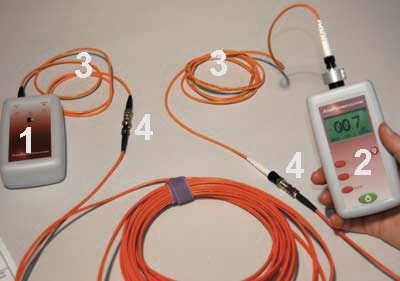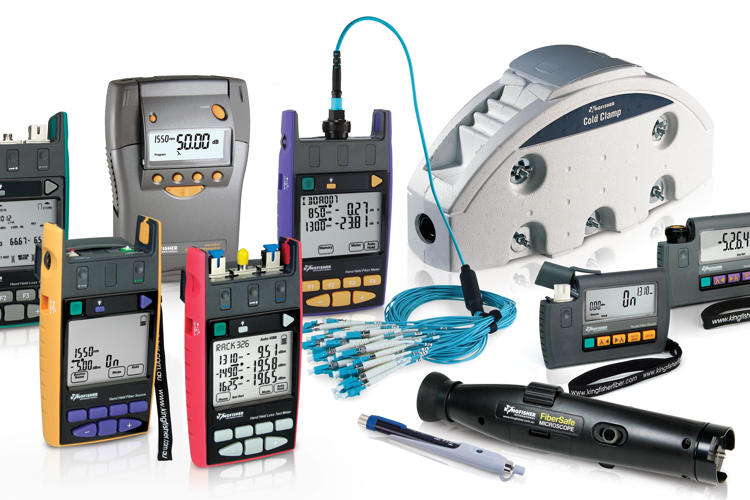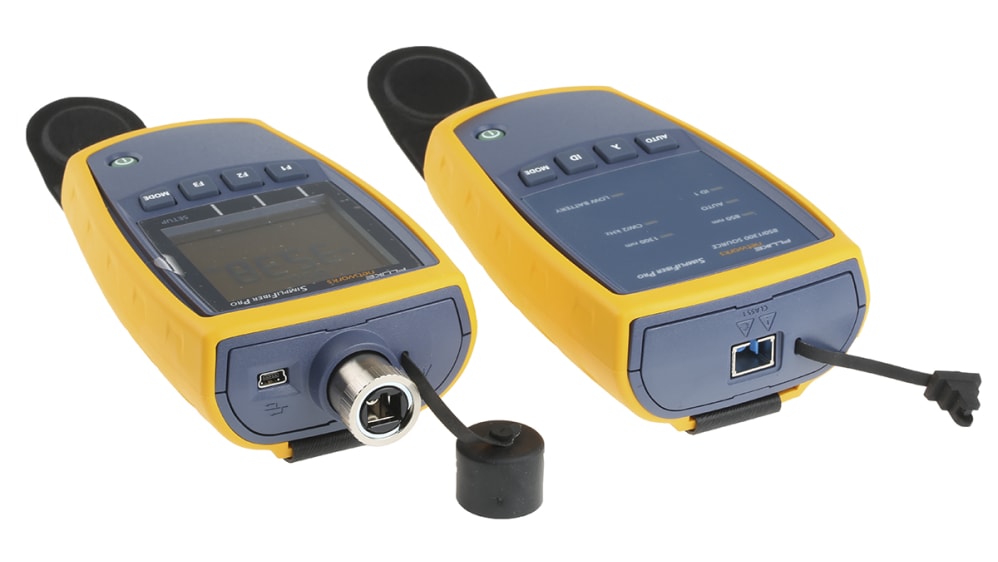The science behind fiber strength and durability through fiber measurement
Wiki Article
A Comprehensive Guide to Optical Measurement System for Fiber Analysis
When it pertains to fiber evaluation, understanding optical dimension systems is vital for assessing efficiency and making certain quality. You'll check out crucial techniques like interferometry and spectroscopy, which help you determine key specifications. Yet there's more to it than just these methods; understanding attenuation dimension strategies can greatly affect your network's efficiency. As you browse with this overview, you'll discover understandings that might change your approach to optical fiber.Understanding Optical Measurement Systems
When you explore optical dimension systems, you'll uncover they're important for evaluating fibers with precision. These systems utilize light to assess various characteristics of fibers, including size, refractive index, and harmony. By using strategies like interferometry and spectroscopy, you can get useful insights into the fiber's properties.You'll find that these systems are made to decrease mistakes and improve accuracy, ensuring reliable information for your analysis. Different arrangements, such as single-mode and multi-mode systems, deal with certain fiber kinds, enabling you to choose the most effective suitable for your needs.Moreover, the integration of advanced software devices helps you analyze the information efficiently, making it easier to recognize any type of disparities or defects. As you check out deeper right into these measurement systems, you'll appreciate exactly how they improve the logical process and boost the general quality of fiber manufacturing and testing.Secret Parameters for Fiber Evaluation
Key criteria for fiber analysis play an important duty in identifying the quality and performance of fiber optics. When you assess a fiber, you'll desire to focus on features such as attenuation, data transfer, and modal dispersion. Attenuation gauges the loss of signal strength as light trips via the fiber. A lower depletion value suggests far better high quality and longer transmission distances - fibre testing equipment.Bandwidth describes the data-carrying capacity of the fiber and is important for high-speed interaction. You'll need to evaluate the transmission capacity to guarantee it fulfills your application needs. Modal dispersion, which develops from the various speeds at which light trips with various modes in multimode fibers, influences signal clarityMethods for Attenuation Measurement

Bandwidth and Its Influence on Efficiency
Comprehending bandwidth is crucial for enhancing fiber efficiency, as it directly influences the amount of data that can be transmitted over a network. Greater data transfer implies you can send out more details all at once, enabling faster communication and far better general performance. When you're dealing with fiber optics, it's important to take into consideration how data transfer connects with fiber qualities, such as core dimension and product properties.If the bandwidth is limited, you might experience information loss or slower speeds, impacting your applications. Furthermore, various types of fibers can support varying data transfer degrees, so it is necessary to select the ideal fiber for your details needs.You should likewise maintain in mind that environmental factors, like temperature level and exterior disturbance, can impact bandwidth. By recognizing these aspects, you can make educated choices to boost your fiber optic systems, ensuring reliable and efficient data transmission.Refractive Index Measurement Methods

Total Inner Representation
Complete interior reflection (TIR) offers as a basic concept for gauging the refractive index of fibers. When light travels from a denser tool to a much less thick one, it can just be fully reflected if the angle of incidence surpasses a details limit, referred to as the essential angle. This sensation allows you to figure out the refractive index by assessing the angles at which light mirrors or refracts. By utilizing an arrangement that guides light into a fiber and gauges the resulting angles, you can calculate the refractive index accurately. Understanding TIR not just enhances your fiber evaluation yet additionally boosts the style and performance of optical systems. So, leveraging TIR can cause much more reliable fiber-based applications.Interferometric Methods
Building on the concepts of overall inner reflection, interferometric strategies offer a powerful methods for determining the refractive index of fibers with high precision. These techniques exploit the interference patterns created when beams split and recombine after traveling different courses. You can utilize arrangements like the Michelson or Mach-Zehnder interferometer to evaluate phase shifts caused by changes in refractive index. By thoroughly adjusting your system and examining the resulting edges, you can establish the refractive index with exceptional precision. It's essential to preserve stable ecological conditions to reduce errors. With these techniques, you'll boost your understanding of fiber homes, leading to much better efficiency in different applications, from telecoms to sensor technology.Modal Diffusion and Its Significance
Modal diffusion describes the spreading of light pulses as they travel with a fiber measurement fiber, which can influence the overall efficiency of the system. You'll see that this sensation can cause signify distortion, impacting data transmission prices and top quality. Understanding its value is necessary for optimizing fiber optic layouts.Interpretation of Modal Diffusion
In fiber optics interactions, modal dispersion plays a significant function in determining signal quality and transmission rate. It happens when different light modes take a trip at differing rates via the fiber. Since each setting has distinct paths and qualities, they can come to the obtaining end at various times. This time distinction can bring about signal dispersing and distortion, which can break down the total performance of the interaction system. You might experience modal dispersion primarily in multimode fibers, where the several courses of light aggravate the issue. Recognizing modal diffusion is essential for optimizing fiber styles and making sure that your communication systems run effectively, keeping the integrity of the transmitted signals over longer ranges.Impacts on Fiber Efficiency
Comprehending modal dispersion helps highlight its effects on fiber performance. This phenomenon takes place when various modes of light travel at differing speeds within the fiber, bring about signal spreading with time. As you evaluate optical fibers, you'll see that raised modal dispersion can significantly break down signal top quality, leading to decreased bandwidth and longer transmission ranges. In practical terms, this implies your information can get here altered or postponed, influencing total communication performance. To reduce these impacts, you could take into consideration using single-mode fibers, which reduce modal dispersion. By picking the right fiber kind and comprehending just how modal dispersion influences efficiency, you can boost transmission top quality and warranty reliable information transfer in your optical dimension systems.Tools and Technologies for Optical Measurements
When it concerns optical dimensions, a number of ingenious devices and innovations go to your disposal to improve fiber analysis. You'll discover fiber optic testers, which analyze signal top quality and efficiency, necessary for keeping optimal network effectiveness. Optical time-domain reflectometers (OTDRs) are vital for finding mistakes and gauging loss over ranges, providing comprehensive insights right into fiber integrity. In addition, spectrometers can examine light spectra, helping you identify material homes and composition.Don' t ignore the relevance of imaging systems, like digital microscopic lens, that enable you to aesthetically check fiber surfaces for flaws. Also, consider making use of polarization analyzers to gauge stress and strain in fibers, which is vital for understanding their behavior under numerous problems. By leveraging these tools and technologies, you can greatly boost your fiber analysis processes, making sure dependability and high performance in your optical networks.Regularly Asked Questions
What Are the Expenses Associated With Optical Measurement Equipments?
The prices related to optical measurement systems can vary considerably. You'll need to review devices rates, maintenance costs, software application licenses, and prospective training expenditures. Budgeting meticulously will assist you stay clear of unanticipated financial challenges down the line.
Just How Commonly Should Fiber Evaluation Be Performed?
You should perform fiber analysis regularly, generally every 6 months or after substantial changes in the atmosphere (optical measurement system). This guarantees suitable performance and helps recognize prospective problems before they affect your system's efficiency and integrityCan Optical Measurement Systems Be Calibrated in the house?
Yes, you can adjust optical dimension systems in your home, yet it calls for accuracy. Ensure you follow the manufacturer's guidelines, use ideal calibration standards, and ascertain your outcomes to ensure accuracy in your measurements.
What Industries Typically Utilize Optical Measurement Solutions?
You'll locate optical dimension systems widely made use of in industries such as telecoms, production, medical care, and research. They're crucial for quality control, fiber evaluation, and guaranteeing accurate dimensions in different applications, enhancing efficiency and precision throughout fields.Are There Any Security Worry About Optical Measurement Equipments?
Yes, there are security problems with optical measurement systems. You must constantly use protective glasses to secure your eyes from intense source of lights and assurance proper training to deal with devices securely and avoid mishaps.Report this wiki page